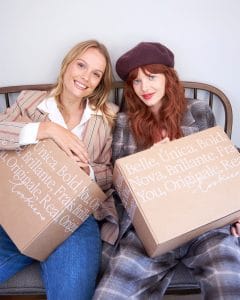Blurb first:
Letterbox Lab provide innovative children’s science kits as subscription boxes.
They have slightly altered postage charges; the Explore Box postage is now £2 rather than 89p, but the Investigate Box postage has been reduced to £2. This more accurately reflects their postage costs, but note they are still absorbing some of these costs. They have also rounded up the box prices (by a huge 1p!). I should thow in here that the value is still excellent.
Two different versions:
The Explore Box (£8 + £2 postage) is for kids aged 6+ and contains a least an hour’s worth of fun science.
The Investigate Box (£22 + £2 postage) has more experiments and more items of collectible lab equipment with enough to keep a junior scientist busy for 3 or 4 hours.
Both kits have full-colour illustrated instructions and online videos to make it easy to do all the experiments.
On to the actual review!
My lovely helper is my daughter, Little C, age seven. I was sent an Explore Box, which is perfectly designed for her age group.
Once again, this took us a bit more time to get to, mainly because of two extremely busy weekends. But we managed to fit it in after school. Oh, and because it’s dark when we get home, you’ll have to forgive the less than lovely LED kitchen lights.

As the name suggests, the box fits through the letterbox.

The three neatly bagged experiments.
Of course we need to check out the instruction book.

This month’s theme, as you might expect, involves air.

The first experiment, Pico-pult, linked in with one from last month, about potential energy.

This was both cute and fun.

Lolly sticks were neatly stacked…

…joined together with elastic bands…

…and the spoon inserted as directed.

Here is Pico in his Pico-pult!
After a couple of false starts, this one was very successful. Pico flew an impressively long way!

Next, Under Pressure. This was definitely an interesting one.



But did it work? What happened when we took off the clip?
Well, it might be giving it away, but in fact the red balloon did not inflate. One of Pico’s predictions was correct!

The next experiment, Elasti Copter, was another interesting one.

I was on cutting-out duty, first with the green card.

After attaching the lolly stick and blades, we wound up the elastic band and watched what would happen.
Well, the blades spun around fine, but the helicopter fell straight to the ground.
Too heavy perhaps?
Let’s try it again with something lighter.

This time we used the large paper cutout. This was much more successful, and we got a couple of good flights out of it. So, the trick is, don’t make the helicopter too heavy!
The fourth and final experiment was awesome.

Making a Gloveophone! Yes, that’s an instrument using pipe, tape, a straw, and a latex glove.
The creation process was a little complicated and required rather a lot of teamwork, but the finished product?

Amazing!
Once we got the hang of stretching the latex correctly over the mouth of the pipe, it make the most remarkable honking noise. It was surprisingly loud and piercing, but extremely effective.
We did a bit of experimenting with trying to change the note, and Little C also used her finger on the mouth of the black pipe to change the tone.
All in all, this was a really interesting process! It’s an incredible feeling to create a musical(ish) note from a collection of completely random items.
Unsurprisingly, Little C’s favourite thing from this box was the Gloveophone! Never underestimate a child’s delight in making loud noises.
The catapult came a close second, and I had to dissuade her from experimenting with more things to catapult around the place! Pompoms only I think.
These boxes definitely require adult input, but not so much that the child feels they are observers rather than active participants. As a rule I wait for Little C to ask me if she needs help, unless it’s quite obvious she can’t manage something.
Another useful thing is that there are always items to keep, so you can repeat many of the experiments. Perhaps even with siblings or friends!
Projects like this are tremendously engaging for young children, and they learn things and become familar with principles they will come across later on in their education.
There’s so much at the moment with girls and STEM subjects, and this is a wonderful and totally neutral introduction to science for all children. The little cartoon characters, Meg and Pico, that guide you through the activities are a boy and a girl, and it’s frequently Meg who takes the lead. I don’t know if this was intentional or not on the part of the creators, but it’s very encouraging.
As always, tremendous fun from Letterbox Lab!













